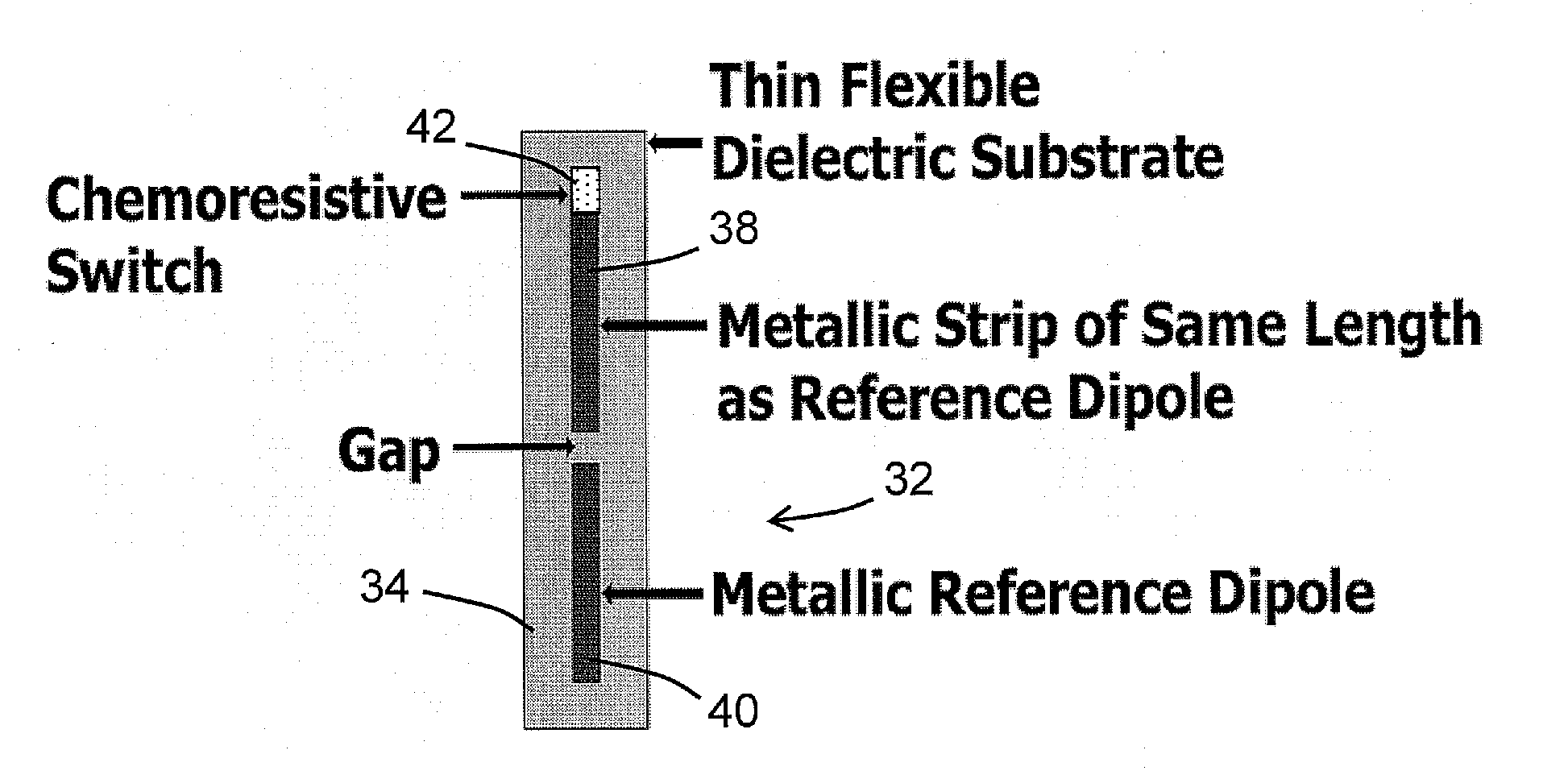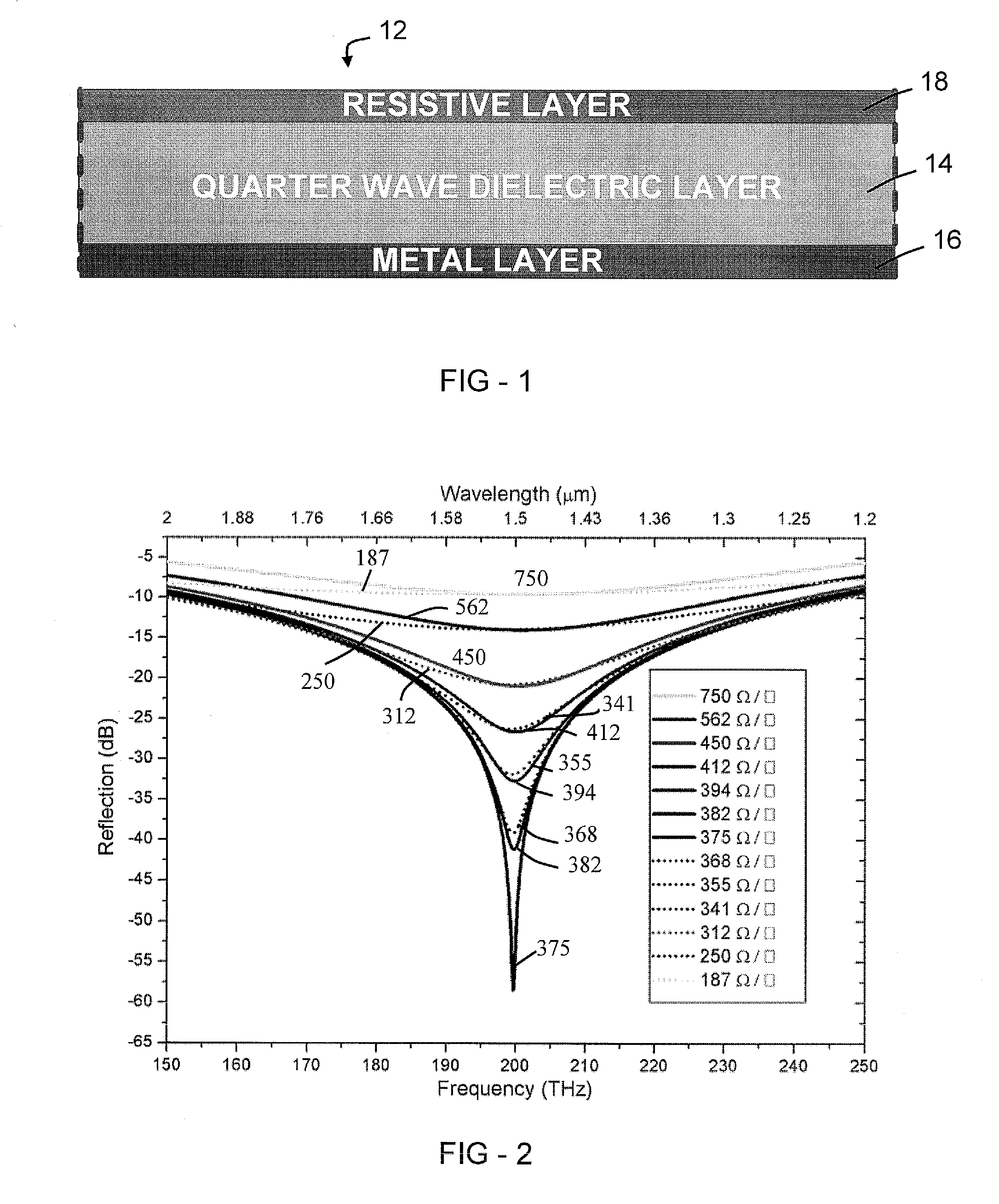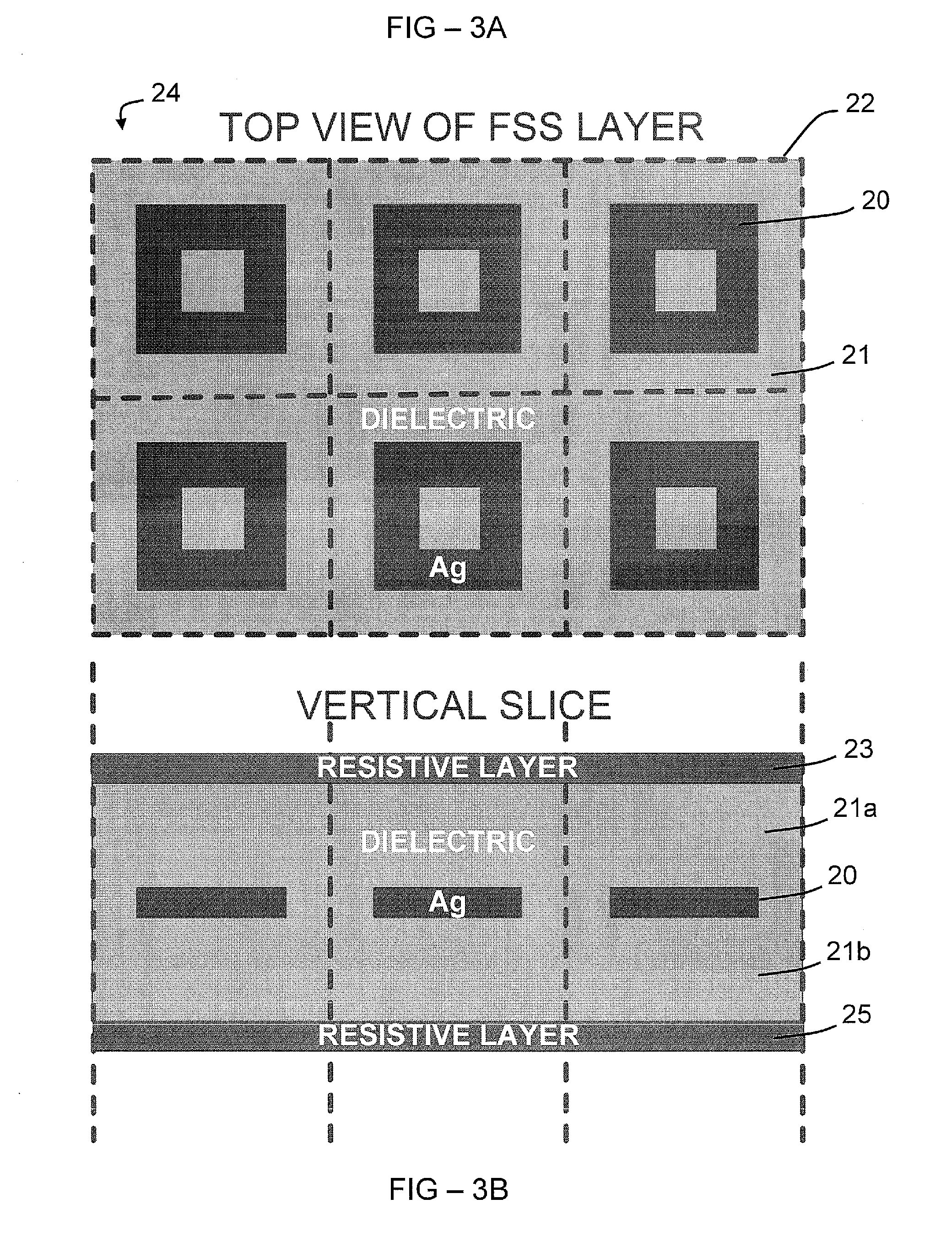Passive detection of analytes
a passive detection and analyte technology, applied in the structure of radiating elements, polarised antenna unit combinations, instruments, etc., can solve the problems of inability to deploy, inability to monitor from a distance, complex current chemical and biological detection apparatus and methods, etc., to reduce the overall dimension, reduce the required substrate area, and effectively enhance the electric length of the detection dipole
- Summary
- Abstract
- Description
- Claims
- Application Information
AI Technical Summary
Benefits of technology
Problems solved by technology
Method used
Image
Examples
Embodiment Construction
[0036]The present invention relates to the passive detection of analytes. Examples include methods and apparatus for detection of analytes using passive elements, which may be in the form of chaff deployed into the atmosphere. A passive element may be remotely monitored using an electromagnetic probe beam, for example using either a radar or lidar system. Embodiments of the present invention include methods and apparatus facilitating the remote passive detection of analytes. In some examples, passive elements including an FSS and / or dipoles are used.
[0037]Embodiments of the present invention include methods and apparatus for remote detection of analytes using passive elements, such as chaff elements which may be deployed into a region desired to be monitored for an analyte. Examples also include methods and apparatus wherein a passive element is used to remotely detect the presence of an analyte, for example in conjunction with a remote radiation source such as a radar or lidar radi...
PUM
 Login to View More
Login to View More Abstract
Description
Claims
Application Information
 Login to View More
Login to View More - R&D
- Intellectual Property
- Life Sciences
- Materials
- Tech Scout
- Unparalleled Data Quality
- Higher Quality Content
- 60% Fewer Hallucinations
Browse by: Latest US Patents, China's latest patents, Technical Efficacy Thesaurus, Application Domain, Technology Topic, Popular Technical Reports.
© 2025 PatSnap. All rights reserved.Legal|Privacy policy|Modern Slavery Act Transparency Statement|Sitemap|About US| Contact US: help@patsnap.com



